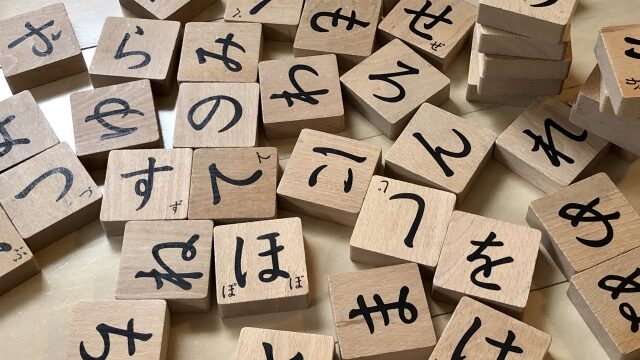Contents
【English to Japanese】Japanese Alphabets, “Hiraga(ひらがな)” “Katakana(カタカナ)” “Kanji(漢字)”

Japanese language has three types of letters: Hiragana, Katakana, and Kanji.
This section introduces the history and the role of Japanese letters and character.
Japan had learned the culture and imported the character (Kanji) from China, more developed country than Japan at the time of AD 400 -500. After Japan imported Kanji from China, they evolved and developed Hiragana and Katakana based on Kanji to express the pronunciation of Japanese words.
Japanese people study Hiragana first in an elementary school first and Katakana next.
After they learn both Hiragana and Katakana and know each pronunciation, they are going to study Kanji.
Japanese people combine these three types of letters and character
and use them for their daily life.
Hiragana/ひらがな

Hiragana is the letter to pronounce the sound of Japanese words, and there are 46 basic Hiragana letters in total. On the contrary to English, once you memorize and know how to pronounce Hiragana, you can read any Japanese words. When you try to pronounce an English word, you cannot read and pronounce it even if you know how to pronounce the alphabet, a, b, c…, and you need to know how to pronounce and to spell. You might feel that, wow, there are a lot of letters to memorize…but it is very systematic, and once you memorize, it is much easier to study Japanese than English.
Katakana/カタカナ

Katakana is the correspondent letters to Hiragana. Same as Hiragana, there are 46 basic Katakana letters in total. Katanaka is also for helping how to read Japanese words. One of the features of Katanaka is that Katakana is used to describe foreign words. For example, Stew (シチュー=Shichu), Log Out (ログアウト=Rogu Auto),
Subscription (サブクス=Sabusuku). Also, Katakana is used to express the sounds and emotional words in Japanese. For example, “goo-goo-“(グーグー) to represent the sound from stomach when you are hungry.
Kanji/漢字

Kanji is originally developed in China and Japan imported and has currently used them almost as they are since the very beginning of its history, even though there are slight changes or updates from the original form of Kanji. It has been said that more than 50,000 Kanji exist as Chinese, and about 15,000 characters out of the 50,000 ones are used in modern Japan, However, most Japanese people cannot memorize, write, or understand them. It is almost impossible to do that. Japan defines only 2,136 Kanji characters as Kanji for the daily lives. Kanji is usually used for names of people and places, books, dictionary, journals, magazine, or all documents in Japanese society.
One Kanji character itself has its own meaning, for example, 良(=good), 悪(=bad, evil), or 食(=food, mean, eat),etc. On the other hand, don’t be afraid of the huge number of characters! There are not so many Kanji to be used in our daily life.
When you see how Kanji and Hiragana and Katakana are combined and used in a sentence, you will be able to be interested in it. I will be happy to see that you can have fun in studying Japanese.



